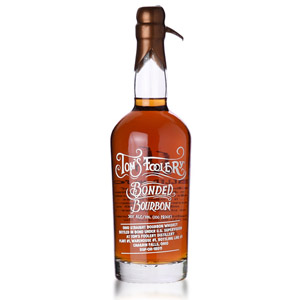Today we have a public service announcement. While trolling the liquor aisle at your local big-box (Costco) you might encounter an appetizingly large bottle of craft rye from Sonoma. If you, like me, are on the hunt for bottles at the intersection of “interesting” and “cheap” you might be tempted to grab a liter of craft rye for $34. I did, and I made a respectable number of whiskey sours with it over the course of the pandemic. Still, I did not get the “interesting” part of the above equation, and I wanted to write a little about that.
Craft is a double-edged sword. Often, it means spirit that has been hand-crafted (often literally, if the distillery is small and not automated), which allows for all kinds of non-common-denominator characteristics. I don’t want my whisky to be boring and “easy to mix”, I want it to jump out of the glass and make me consider its layers. The other edge of that sword, however, is that many craft products are made by inexperienced distillers or using promising but under-delivering ingredients. Just because 100% of the corn originated from the dusty mom-and-pop field down the street from the distillery doesn’t mean it’s GOOD corn, or even good corn for mashing and distilling. Just because the distillery got its hands on a limited run of wine barrels from the celebrated winery across town doesn’t mean the whiskey will meld well with those casks. And just because the “local microclimate” and “artisanally restored barn warehouse” (kidding, or am I?) promote rapid aging doesn’t mean the whiskey was allowed sufficient time to fully mature by the cash-strapped startup distillery.
Rant aside, Sonoma Distilling Co. was founded in 2010 and is a small but growing distillery located in the bucolic town of Rohnert Park, California, in Sonoma Wine Country. I’ve actually visited the distillery location before they changed their name from Sonoma County Distilling and updated their labels. I liked their early bottlings of rye and bourbon enough to join their whiskey club, which went defunct almost immediately. I now suspect they got a distribution deal that led to their whiskey appearing on Costco shelves, and that’s why they no longer had volume to service their club. Growing pains, I guess, but not a great look for “craft”.
The rye that I found at Costco for $34 is distilled at the Rohnert Park location (this is not a sourced whiskey) from a mashbill of 80% rye from California and Canada, and 20% malted rye from the United Kingdom. I understand that the distillery is moving towards sourcing 100% of its grains from California. This mash is double distilled in the pair of copper pot stills on-site and aged for a “minimum of two years”. The resulting whiskey is bottled at an appealing 46.5% ABV.
Note that the distillery’s official lineup also includes some cask-strength editions as well as some Cherrywood-smoked rye and bourbon.
Nose: Full, round, grain-forward, but with soft summer fruits. Spirity, with a yeasty / acetic note of young spirit. Strong nose tickle despite the moderate abv. Limited spice notes, perhaps some fresh cardamom and white pepper, but little of the typical rye baking spices are present.
Palate: Medium bodied. Mild tongue burn, appropriate for 46.5%. A strong pine flavor arises after the burn, totally washing out any other flavor of grain or wood. I find this in “too young” ryes a lot.
Finish: Medium-long. Warming. On the finish, the pine notes mature into a sweet piney resin, with a little cinnamon and some green apple. Finishes without bitterness.
With Water: Several drops of water have the predictable effect of bringing more pine sap notes to the aroma. After a rest in the glass to dispel them, there’s additional vanilla notes and a bit more sweetness. The pine is still detectable. I don’t suggest adding any water to this.
Overall: Undeniably a young, spirity craft rye. The strong pine flavor reminds me of several other young ryes in this category, and isn’t my favorite thing to encounter in a whiskey. Still, for the price that I found it, it’s a decent deal. Even if it’s not a new hidden gem in the craft whiskey market, it makes completely acceptable cocktails and wouldn’t ruin an evening if consumed neat. I do think the distillery’s cask strength products are (or were?) better than this, but I now feel the need to taste them before buying.
I’m not sure exactly what happened between my visit and this bottling. Perhaps the romanticism associated with visiting a distillery (even an ugly warehouse-y one) clouded my early tastes. Perhaps the Costco distribution deal strained their output and forced them to bottle whiskey before it was ready. I will be keeping an eye on the progress of Sonoma Distilling Co., and I hope to discover that this latest experience was a fluke.









As a single malt drinker I think I usually find these spirits that are made from one type of grain more interesting than a bourbon drinker would. I’ve had some good ones from WhistlePig and Mastersons, albeit for a lot more money. Both of those are sourced from Canada (Alberta Distillers if I’m not mistaken). I agree with you about the pine. If I want to taste pine I’ll drink gin.